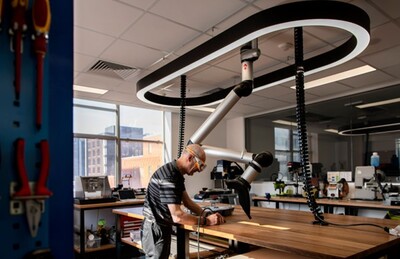Fast-tracking medical device development

Neo-Bionica, a joint venture between The Bionics Institute and The University of Melbourne, is an end-to-end medical device prototype development facility, recently launched in Melbourne.
With the bioengineering expertise and technology required to create first-in-human prototypes for clinical trials, the new facility and its processes have been designed to fast-track new treatments for people with conditions such as epilepsy, Parkinson’s disease, arthritis, stroke and diabetes.
Bionics Institute CEO Robert Klupacs said the facility will enable homegrown inventions to be manufactured rapidly in Australia for the benefit of patients throughout the world.
“Australia has incredible engineering and clinical capability, and we wanted to create an environment where Bionics Institute and other Australian-made concepts can be manufactured locally and ultimately exported to the world,” Klupacs said.
Located on the campus of St Vincent’s hospital in Melbourne, Neo-Bionica enables clinicians, scientists, engineers and industry partners to collaborate in the quest to find solutions for people with hard-to-treat diseases like epilepsy.
Professor Mark Cook, epilepsy expert and Director of Neurology at St Vincent’s Hospital, said, “The ability to walk from my consulting rooms to the Neo-Bionica facility and talk to the engineers developing prototypes for my patients to test will have a huge impact on the speed of developing new treatments, and the future of medicine in Australia.”
Neo-Bionica designers Merat Architects and builders Alchemy Construct worked in close collaboration with the institute’s engineers and laboratory team to not only capture the specialised functionality required but also incorporate the creative character of the teams and their work. This resulted in a rapid prototyping and development laboratory, two independent cleanrooms (ISO7: electrode and medical device fabrication and ISO8: electronics assembly), and a mechanical workshop with all areas fitted with specialty equipment.
Alchemy Construct Project Engineer Shabab Salahuddin said, “The new space provides an open plan workflow which is critical for the work being performed in the laboratory. The emphasis was on building a space which provided high-quality, clean zones.”

Merat Architects Principal Barry Merat said their aim was to create a shared space with design and engineering teams co-located to ease the transition from design to fast prototyping and manufacturing. Merat hopes the design helps create inspiration for pioneering medical research.
A particularly striking design feature is the wooden panelling along the entryway of the facility, which takes the form of a wave, emulating an EEG recording of brain activity. This reflects research undertaken by engineers in Neo-Bionica, who develop medical devices for a range of conditions. One of these devices, developed in collaboration with Professor Cook, records brain activity in people with epilepsy, with the aim of predicting seizures in the future.

Each aspect of the facility has been carefully considered. Custom workstations have been designed and fitted to house medical device microfabrication equipment, 3D printers and high-speed machining tools. Specialised exhaust systems were fitted to maintain the air quality required for development of medical-grade components, alongside lighting to enable intricate work.

Glass has been used prominently throughout to create visual displays, link working spaces together and maximise use of the natural light. It also affords views over the Melbourne CBD and Carlton Gardens from the office space and meeting room. Use of wood throughout gives a calm and serene feel to the facility.
University of Melbourne Executive Director of Research, Innovation and Commercialisation Ken Jefferd said Neo-Bionica will grow Melbourne’s reputation as a global biomedical powerhouse and boost the Australian economy.
“Not only will patients reap the benefits of groundbreaking medical devices more quickly, Neo-Bionica will attract international collaborators, generate employment, strengthen Australia’s export capability and boost the economy,” Jefferd said.
Fundamental reimagining: new Sydney Children's Hospital, Randwick
The new Sydney Children's Hospital, Randwick, was designed as a fundamental reimagining of...
UNSW Health Translation Hub opens
The $600 million UNSW Health Translation Hub — an integrated medical, research and health...
Vertical healing: redefining health care through high-rise hospital design
The high-rise hospital signifies more than a shift in form — it reflects a transformation...




![[New Zealand] Transform from Security Awareness to a Security Culture: A Vital Shift for SMB Healthcare — Webinar](https://d1v1e13ebw3o15.cloudfront.net/data/89856/wfmedia_thumb/..jpg)
![[Australia] Transform from Security Awareness to a Security Culture: A Vital Shift for SMB Healthcare — Webinar](https://d1v1e13ebw3o15.cloudfront.net/data/89855/wfmedia_thumb/..jpg)




